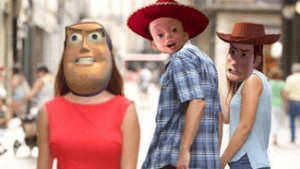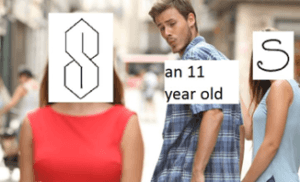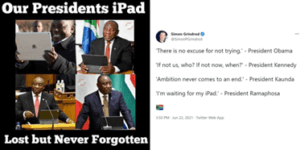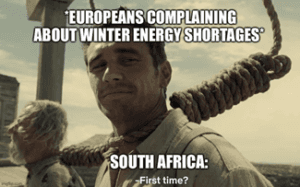Have you ever been going through something, and you just didn’t know how to explain it? Then, when you’re scrolling online, you find a meme that is so wickedly funny, so *relatable* that you finally feel seen? Finding the right meme helps you confirm that other people have experienced something similar to you. It’s like an inside joke. It’s this weird, absurd way of connecting with others, using only some simplistic text, a stock image and some photoshop. And it’s probably one of the most iconic legacies of the internet. This article is an ode to memes and a nod at how they represent our changing styles of communication.
Richard Dawkins, an evolutionary biologist, first coined the word ‘meme’ in his book, “The Selfish Gene”. He describes a meme as “A unit of cultural inheritance,” or “Anything that’s copied, anything that’s imitated.” So, like our parents pass on blue eyes or brown hair, the internet passes down media. By comparing memes and genes, I think Dawkins showed us that there are new ways to pass on legacies. We do not always have to use our words to pass on messages nor do we need to rely on our physical forms to pass down remnants of our past lives. In a time where data and media dominate, we can communicate the past and present with memes.
Memes are snippets of media adapted to tell a story. Analysing their adaption can help us consider and acknowledge the absurd, non-linear patterns of communication in the age of the internet. Almost all memes are derivatives of existing media. Little pieces of information or media move through cyberspace, serving subculture after subculture until it gets to you. And as it moves, its meaning changes. It’s like Gen Z’s broken-down telephone. What starts as a simple screenshot or a stock image, can very quickly become a laughing stock with the right caption and context. For example, let’s consider the Sue Sylvester meme, and how her legacy has been reconfigured to suit new conversations.



And of course, we can’t forget the distracted boyfriend format.



Memes often have complex and layered meanings. There are many different types of memes too. I think of them in four categories: crass pessimism, self-aware irony, cringe silliness, and unexpected sincerity. Specific groups generally share specific kinds of memes. Depending on your kind of humour, some of them will make perfect sense and others won’t land. But just because they say one thing, that doesn’t mean they can’t be adapted to suit new contexts. As time passes, they will change again to accommodate new trends, rhetorics and attitudes. Bad Luck Brian, for example, can characterise the early memes of millennials who preferred crass pessimistic memes. Today, more wholesome memes can show the shift towards trends that centre on self-care and mental health awareness.


The same goes for memes distributed by Gen Zs in the 2020s. As the younger generations become increasingly more in touch with politics through their uninhibited access to the internet, we see more of today’s memes using self-aware irony and blunt sincerity to critique our political and cultural contexts. One example is The Onion (with 3.7 million followers), an American “news” account that uses its Instagram platform to share fake headlines in a self-aware ironic style in order to criticise government failures and systemic issues like racism and sexism using dark humour. In this way, memes offer a unique reflection of the culture and zeitgeist of the time.


In South Arica, this also rings true. Our meme culture is wildly irreverent and always critical of our political leaders. Remember the presidential addresses we had every other night during COVID-19? Those addresses were tense, but the memes that circulated on Twitter and Instagram afterwards made up for it. When the President put his mask on wrong, we were in an uproar. And when he jokingly accused someone of stealing his iPad, Twitter went crazy. The memes offered comedic relief and gave us an opportunity to laugh in difficult times. They help us express ourselves in a time of isolation.




Meme culture shows us that we live in an age where data becomes the currency for self-expression. We’re finding new ways to bridge the gaps caused by language’s limitations. In a culturally volatile time, where technology is ever-advancing, meme culture represents a change in the narrative, a massive evolution towards non-traditional streams of communication. Now we are able to express the political and social climate in easy, palatable ways that are not only able to indicate change, but also make us laugh. Sure, a lot of memes are just pure silliness, but if you look a little closer, you might be able to find some broader signifiers about the time we’re living in and the microtrends emerging around us. And although the formats may seem disposable and the designs are often lacklustre, these images can tell stories that sometimes words can’t. And that’s something worth considering.
Tell us: what are some of your favourite memes?


